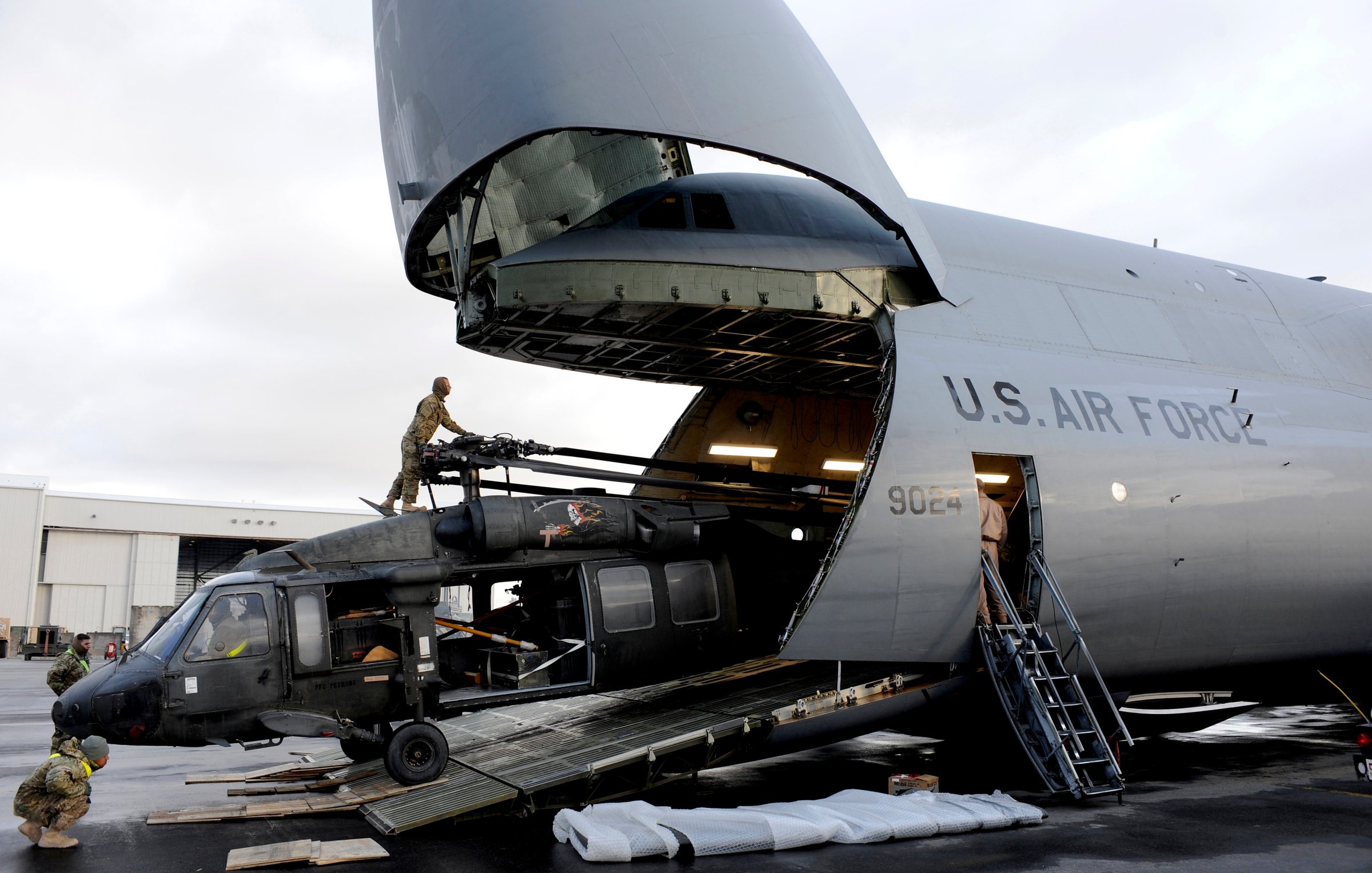
Lockheed, the nation’s biggest defense contractor, announced Monday that it plans to buy Sikorsky, the world biggest military-helicopter builder, for $9 billion. If all goes according to plan—and, as antitrust experts predict, neither the Pentagon nor Justice Department objects to the purchase—Lockheed will add Sikorsky to its stable by early next year.
Lockheed stands atop a group of the Defense Department’s big five suppliers. Last year, its $25.3 billion in Pentagon contracts accounted for nearly 9 cents of every U.S. defense-contracting dollar spent, which also includes spending on non-military items like fuel and food. The other four are Boeing, (6.4%) General Dynamics (4.8%), Raytheon (4.2%) and Northrop Grumman (3.3%). United Technologies, which owns Sikorsky, ranked #6, but it builds more than just helicopters for the Pentagon. Over the past 25 years, the 10 biggest global defense contractors have seen their share of the market climb from 40% to 60%.
Lockheed builds the F-35—the most costly weapons system in history, with a projected price tag of nearly $400 billion—as well as the C-130 cargo plane and various missile-defense systems. Sikorsky manufactures the UH-60 Black Hawk and several other military choppers, including a new fleet of Marine Ones for presidential hops.
The Pentagon and other federal agencies account for about 80 cents of every dollar Lockheed makes, and its Sikorsky purchase is the defense industry’s biggest deal in 20 years. Once Lockheed digests Sikorsky, Lockheed will be a key source for much of the Pentagon arsenal.
Are these defense giants getting too big?
“I don’t think we will know until we’ve reached a breaking point, and then only in hindsight we will say it was too big,” says Todd Harrison, defense-industry expert at the non-profit Center for Strategic and Budgetary Assessments in Washington, D.C. “An over-consolidated industrial base could crowd out new entrants, stifle innovation, and prevent opportunities for competition.”
It may depend on how you look at it. “After [Lockheed acquires Sikorsky], they’ll be the biggest fighter[-jet] prime [contractor] in the world, the biggest helicopter prime in the world, and the U.S.’s biggest military transport [-plane] maker,” says Richard Aboulafia, a defense-industry analyst at the Teal Group Corp., a consulting firm based just outside Washington, D.C. “But there is still competition in each of these segments.”
The last big defense-industry consolidation took place in the mid-1990s. It followed then-deputy defense secretary William Perry’s infamous 1993 “last supper” with defense-industry titans at the Pentagon. He warned that shrinking military budgets wouldn’t let them all survive, triggering a wave of mergers.
But concern over the shrinkage in the total number of defense contractors since the end of the Cold War misses the evolving nature of the defense business, Aboulafia says. “In 1978 you had companies like LTV making relatively simple jets like the A-7,” he notes. “They built most of the plane, aside from the engine and some relatively low-cost instrumentation.” But today’s warplanes are less aircraft than flying computers. “Today, [the airplane-building contractors] do much less, and the internal value is huge,” he says. Nearly all of that work is done by other companies, where competition can be intense.
But then there’s the flip side of the coin. As defense contractors have gotten bigger by gobbling up fellow defense contractors, that leaves fewer to compete for future contracts. “I believe the government must be alert for consolidations that eliminate competition,” Ashton Carter told the Senate Armed Services Committee earlier this year before it confirmed his nomination as defense secretary.
You don’t have to look far to see how that can happen. The Army’s next-generation fleet of helicopters—dubbed Future Vertical Lift, in the service’s typical poetic style—pits two helicopter giants against each other for the $100 billion jackpot. Lockheed is building the cockpit and electrics as the key supplier for one of the contending teams, headed by Bell Helicopter. The other candidate is Sikorsky itself. Assuming Lockheed succeeds in gobbling up Sikorsky, it’s tough to see how Lockheed loses, either way.
More Must-Reads from TIME
- Why Biden Dropped Out
- Ukraine’s Plan to Survive Trump
- The Rise of a New Kind of Parenting Guru
- The Chaos and Commotion of the RNC in Photos
- Why We All Have a Stake in Twisters’ Success
- 8 Eating Habits That Actually Improve Your Sleep
- Welcome to the Noah Lyles Olympics
- Get Our Paris Olympics Newsletter in Your Inbox
Contact us at letters@time.com